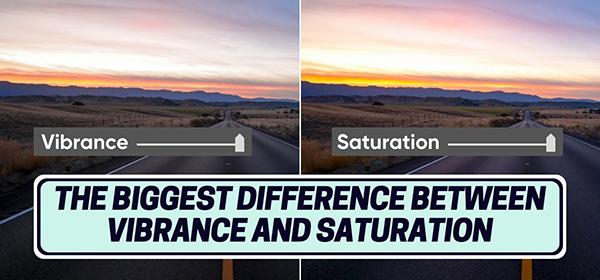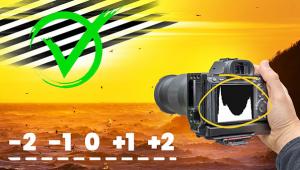Vibrance vs. Saturation: They Work Differently for Outdoor Photo Edits (VIDEO)

Outdoor photographers regularly make Vibrance and Saturation adjustments when editing their images to accentuate colors in a scene. But do you really understand the difference between these tools and how to use them for maximum advantage? Read on.
This tutorial from the popular Photography Course YouTube channel demonstrates everything you need to know to make the most of these common tools to accentuate color while retaining a realistic look. The concept is so easy to grasp that it takes instructor Tara Iv less than three minutes to explain.
Iv is an adept image-editing expert who regularly shares basic editing tutorials that are vary easy to accomplish. She kicks of today's episode like this: "Saturation and Vibrance may seem similar, but they have very important differences, and if you know that they are you'll be able to enhance photographs properly."

Not only do these tools work wonders with all types of subjects, but they do so in much the same way with just about any editing software you use. Iv pulls up a landscape scene with a bunch of neutral colors that really need some work. She begins with Saturation and drags the slider all the way to the right to make the effect as obvious as possible, while recommending that you may want to take a more subtle approach.
As you'll see, Saturation adjustments accentuate every color in this photo. The Vibrance tool, on the other hand, only boosts certain colors. Iv puts it like this: No matter what the color is, Saturation will intensify it. Vibrance is really different because this tool is selective; it finds colors that are more desaturated than others and will intensify these specific tones while leaving stronger colors alone.
The choice of which tool to use is a subjective decision, depending upon the look you want, so Saturation is often a good choice for enhancing fall colors in photos captured under flat light. Conversely, if your goal is to create a softer effect with pastel colors, then the Vibrance tool may be your best bet.

Iv offers several helpful tips for using Vibrance and Saturation in different types of scenes. She also explains how these adjustment can be employed to correct a "color imbalance" in an image. You can find more simple editing tips and tricks by paying a visit to her instructional YouTube channel.
And don't miss the tutorial we posted last week from another expert, with a quick explainer describing the difference between Raw and Jpeg files formats—illustrating which format to use when.
- Log in or register to post comments














































